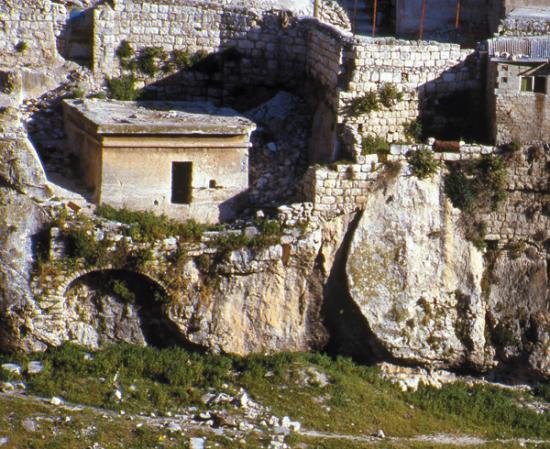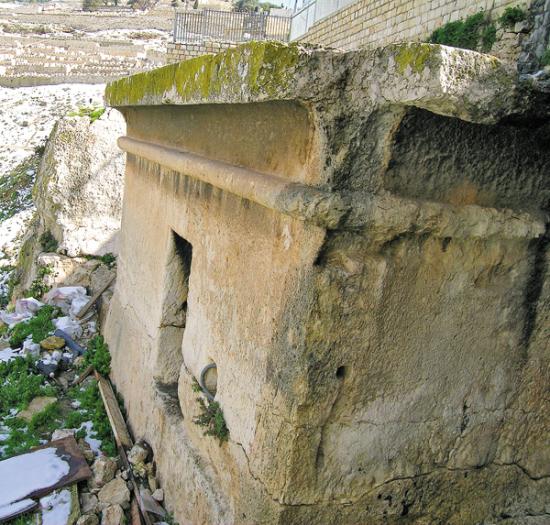Gabriel Barkay Investigates the First Temple Period Jerusalem Tomb
Noah Wiener
Source - http://www.biblicalarchaeology.org/daily/biblical-sites-places/biblical-archaeology-places/the-tomb-of-pharaoh%E2%80%99s-daughter/

Gabriel Barkay investigates the First Temple period Jerusalem Tomb of Pharaoh's Daughter. Credit: Todd Bolen/www.bibleplaces.com.

For centuries, the First Temple period Jerusalem tomb known as the Tomb of Pharaoh’s Daughter has captured the attention of explorers and archaeologists alike. Local tradition, the tomb’s Egyptian decoration and the captivating name Tomb of Pharaoh’s Daughter have spurred speculation about the original occupant of this First Temple period Jerusalem tomb. In the January/February 2013 issue of BAR, archaeologist Gabriel Barkay investigates the question—who was buried in the Tomb of Pharaoh’s Daughter?
Located the Jerusalem village of Silwan, the Tomb of Pharaoh’s Daughter receives few visitors, despite its proximity to the City of David and the dense concentration of First Temple period tombs in Silwan.
The Tomb of Pharaoh’s Daughter was not built; it was hewn out of the rock, with a passageway cut out of the back and two sides. The First Temple period Jerusalem tomb features several Egyptian-style decorations, including its gabled ceiling, Egyptian cornice, and original (now quarried-away) pyramidal roof, all of which helped the Silwan monolith earn the title the Tomb of Pharaoh’s Daughter.
In the Byzantine period (fourth–sixth centuries C.E.), monks lived in the Tomb of Pharaohs’ Daughter and nearby Silwan caves. Their renovations raised the entrance and destroyed most of the original doorway inscription; however, Gabriel Barkay was able to reconstruct the remaining bits and analyze the curse inscription. Gabriel Barkay writes, “Based on the size of its letters, the funerary inscription on the Tomb of Pharaoh’s Daughter is one of the most magnificent ancient Hebrew inscriptions found in the Land of Israel.”
Who was the First Temple period Jerusalem tomb built for? Who was buried in the Tomb of Pharaoh’s Daughter?
Gabriel Barkay examines the remains of the inscription, the Egyptian-style construction, the hewn sarcophagus, nearby tombs and historical evidence of Egyptian influence during Hezekiah’s First Temple period reign to detach the Silwan monument from its association with Pharaoh’s Daughter. As for the occupant, Gabriel Barkay writes, “We don’t know his name, but he was undoubtedly a prominent public figure, obviously one of the leading officials of the Kingdom of Judah in the late First Temple period, earning him the privilege of such a distinctive funerary monument.”
Find out more about the First Temple period Jerusalem Tomb of Pharaoh’s Daughter. BAS Library Members, read Gabriel Barkay’s “Who Was Buried in the Tomb of Pharaoh’s Daughter” as it appears in the January/February 2013 issue of BAR.